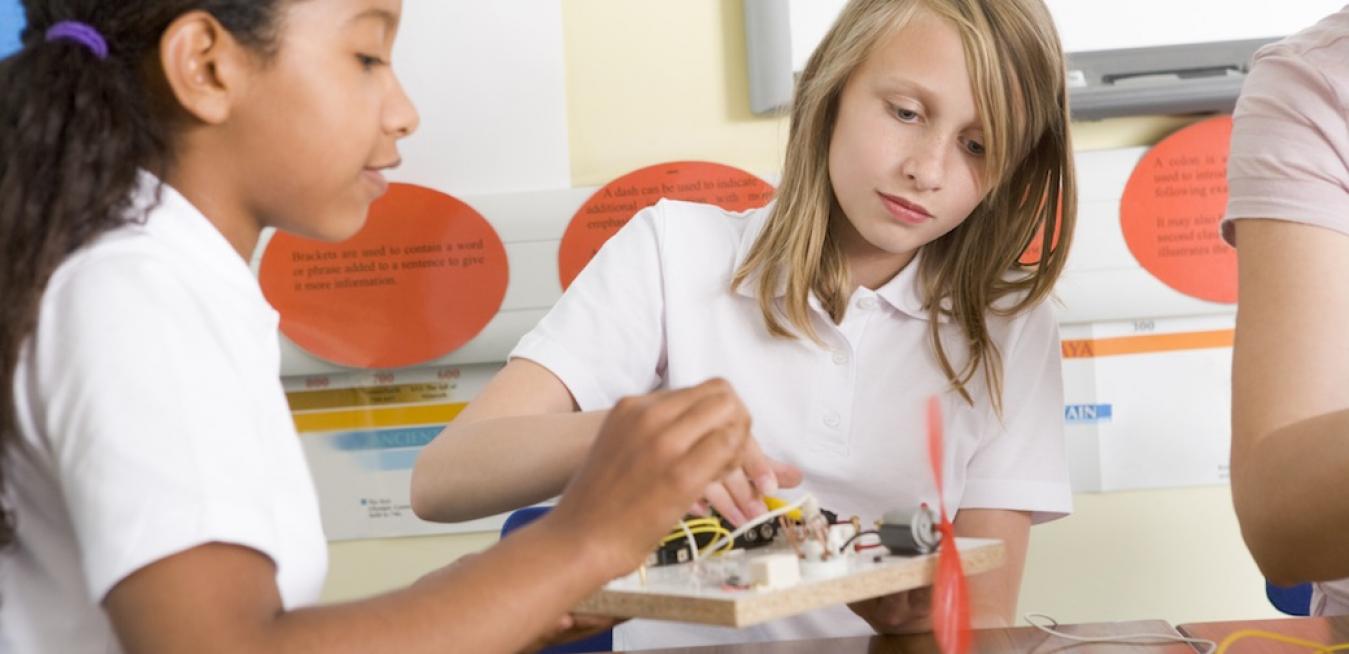Engineering is an essential skill for everyone to learn. So how do we get kids to try it?
We’ve all heard the statistic — nine of the top 10 highest-paying college degrees are in engineering fields.
As teachers, many of us talk up those kinds of numbers to invest our students in the importance of math and science classes. It’s easy to buy into the idea that if students complete an engineering degree and pursue a career in STEM (science, technology, engineering, and math), their economic and life prospects will be bright. But how do we really prepare them to be successful in such a rigorous field?
Engineering uses math and science to solve real-world problems and create new things. Yet unlike math and science as it’s often taught today, engineering in the real world does not involve simply solving a problem that already has an established solution — it’s using math and science to solve problems no one has seen before.
Good grades in traditional math and science classes simply aren’t enough for a student to be successful as an engineer. To prepare students to think like engineers, we need to provide students with more opportunities to do engineering at school.
Since the early 1990s, only about 10 percent of U.S. K-12 students have had any kind of formal engineering education. Of those, just 19 percent of engineering degrees are awarded to women, according to the American Society for Engineering Education, with just 14 percent going to people of color. When a solid foundation in engineering is only available to one tenth of our students, we’re closing a door to some of the most exciting career paths our economy has to offer. And the greater society misses out on all of the smarts and innovations that diverse talent would foster.
The need for engineering in schools is not limited to students who aspire to pursue engineering in college. Currently, 20 percent of all jobs require proficiency in basic STEM skill, a Brookings Institution report shows. Those jobs pay an average of 10 to 14 percent more than non-STEM jobs with similar education requirements, and half of them do not require a bachelor’s degree. The number of STEM jobs is expected to grow 17 percent by the year 2020, with many engineering fields growing at an even faster pace.
Engineering can be incorporated in any math and science class, and even classes like history, economics, computing and writing. Contrary to the stereotype of engineers being stodgy number crunchers, creativity as an engineer is not only encouraged — it’s required. The communication of ideas through writing and speech is also critical to help others understand the approach taken for a given solution. There is always a mindset of continuous improvement, and innovation is the goal.
Resources abound to help introduce these activities, such as TeachEngineering, eGFI, Zoom, Design Squad and FIRST robotics. Industry speakers can be great role models, and you can find them along with many local workshops and summer programs through colleges and groups such as the Society of Hispanic Professional Engineers, Society of Women Engineers, National Society of Black Engineers, and American Indian Scientists and Engineering Society. Incorporating these activities early and often gives kids the opportunity to practice solving problems in a creative way, without the confines of defined steps and single solutions.
The reward of seeing students do engineering is unlike any other. I once taught my Saturday School class at KIPP to build a game using circuits, with a paperclip serving as the switch. One of my girls noticed that the switch was not very reliable, so when she got home she made a video of a modification she made that incorporated a spare light switch she found laying around her house. That day, she not only learned to build a circuit, but she used engineering to make it better.
Whether or not she becomes an engineer, the mindset of continuous improvement — coupled with a comfort level around mechanical parts and technology — will undoubtedly help provide her with a foundation for success in any situation that requires STEM knowledge.
There are many of us in K-12 who are teaching engineering right now, whether through an afterschool Lego League or a formal engineering course. My hope is that as many students as possible have the chance to apply math, science, reading, writing and speaking through engineering to get an even better sense of what STEM looks like in the real world — and inspire even more kids to be part of the next generation of change-makers and innovators.
(Top image: Courtesy of Thinkstock)
Juliet Garcia was an engineer for Encana Oil & Gas before joining Teach For America as a Colorado ‘09 corps member. After four years of teaching, she returned to Encana as an engineer and still regularly volunteers at her placement school as a Saturday School science instructor.






